KT Tunstall: the 10 records that changed my life
Plus singer-songwriter talks "surprising" new long-player KIN and James Bay duet
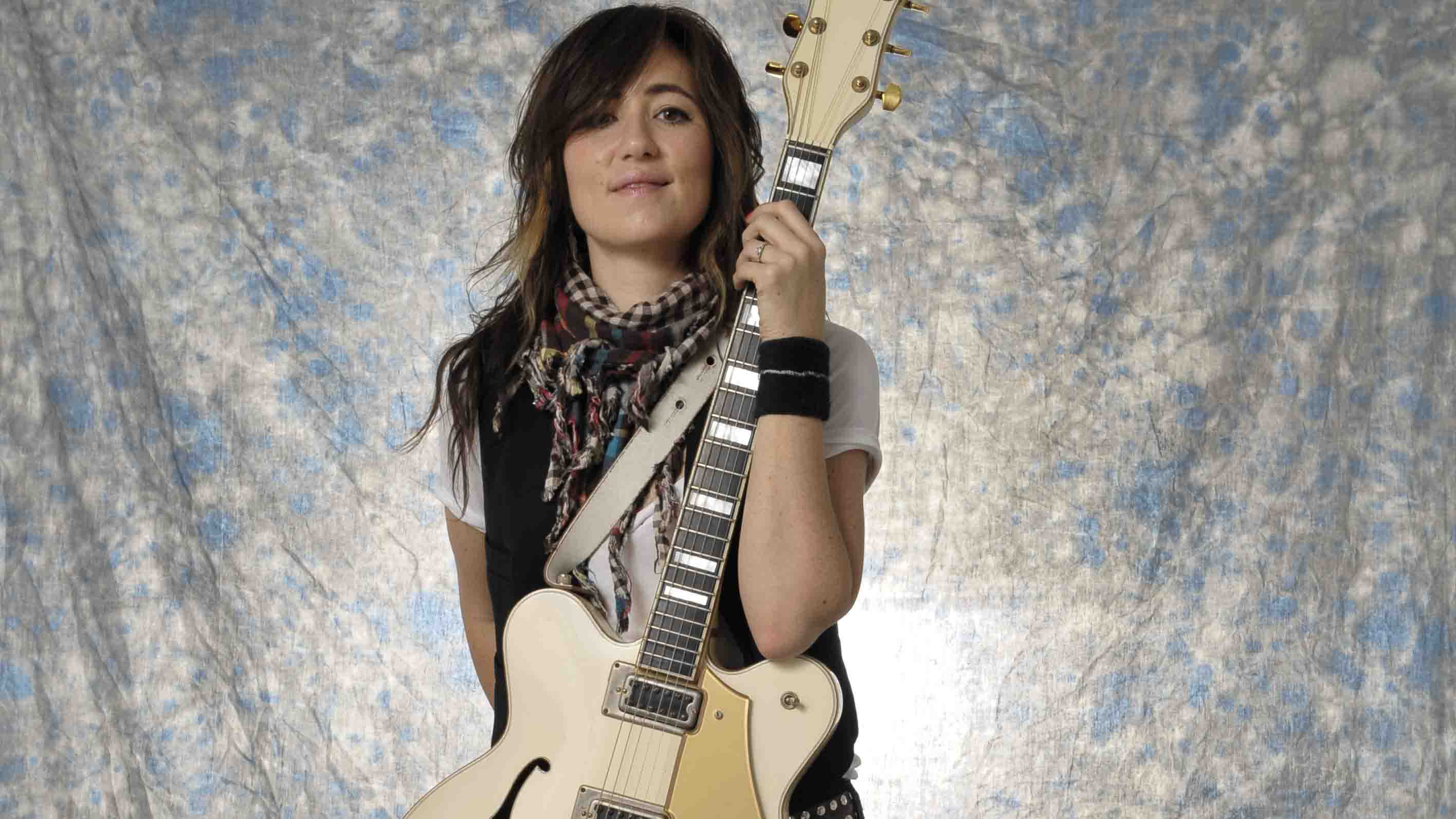
KIN
Last week, Scottish pop singer-songwriter KT Tunstall released her sixth solo album, KIN, just two years after she seriously contemplated taking a substantial decade-long break from her solo career to concentrate on penning music for movies in Los Angeles.
“I can’t say that I genuinely felt like I was going to give up completely, but I certainly felt like I was going to take a really substantial hiatus of around five to 10 years before I would think about making another record,” explains KT.
“And, of course, making that decision is a huge decision because - particularly in this day and age - you’re actually seen as making a comeback if you haven’t put any music out in six months!
You’re actually seen as making a comeback if you haven’t put any music out in six months!
“So it would have really been a serious undertaking to come back after that long, but I really took all that onboard. I was really ready to step away, and I think that ultimately cutting the umbilical cord from making records and touring and feeling divorced from it and feeling like I didn’t have to do it was the emancipation that I needed to come back to it with a positive frame of mind and also excitement.”
So what initially prompted Tunstall to even consider embarking on such a lengthy hiatus from the musical frontline?
“I went out and toured that last record [Invisible Empire // Crescent Moon, 2013], which was written at such a tumultuous time in my life,” she recalls.
“My life had literally turned upside-down. I went out and toured that record over the summer with the band, and then I did a good year to 18 months just touring solo, which I hadn’t really done before.
I was playing these very sensible, sedate, well-behaved gigs in theatres while wearing a tailor-made suit. Quite frankly, that’s not for me
“It was a very different record for me. It was a very down-tempo melancholic folk record with all the songs kind of sitting around the same mood, and I’d never done that before either. My records have always been very dynamic and diverse, but I was very excited to make that singular mood record the same way that I would enjoy a Nick Drake record.
“With the touring, I loved sharing the songs but, ultimately, I just wasn’t getting a buzz, and I wasn’t loving touring. Touring is such a major sacrifice, especially as you get older, to be away from friends and family and home and any sort of routine or home comforts. I just didn’t feel like it was worth it because I wasn’t enjoying it enough.
“I'd always decided to never have a proper job, because I didn’t want to do something I didn’t enjoy, but there I was doing the thing I thought I loved and not really enjoying it very much, and that’s not good for me and it’s not good for fans.
“I think the gigs were great and I still really enjoyed playing that record, but I wasn’t getting enough energy back to balance out the energy that I was giving out. I was playing these very sensible, sedate, well-behaved gigs in theatres while wearing a tailor-made suit. Quite frankly, that’s not for me.
“It was a beautiful experience, but I need to have a much more physical experience when I play. I want to sweat, I want to go on stage and feel the music and most importantly feel the crowd, but it’s very difficult to feel the crowd when they are all sitting down.
“So, I just decided that I should take a break. I’d always wanted to explore film and get more into film music but I just hadn’t had time, so it seemed like a perfect opportunity to learn about all that.”
It was after moving out to Venice Beach, California and immersing herself in the Sundance Institute’s Film Composers Lab that KT suddenly rediscovered her creative spark and penchant for pop song-writing again. Hooks, melodies, riffs and lyrics were coming to Tunstall in such a spirited, inspired and unpressured manner that she simply felt she “would have been an idiot” to ignore them.
The results are there for all to see across the 11 tracks that make up KIN, an album that ended up being something of an unplanned surprise for the singer-songwriter.
“KIN is basically a kind of rite of passage, scars-and-all celebration of going through difficult things in your life and being better for it,” says KT.
“The reason it’s called KIN is because, at the end of that process, you find your tribe, your people who’ve been through these similar experiences and have ended up with an ability to use them in a positive way rather than letting them ruin them.
“And so, really, it’s a soundtrack to celebrating surviving all the shit and really feeling like a more compassionate, deeper, wiser human being for it and feeling grateful for it all, which is what Maybe It’s A Good Thing is about: those terrible things that happen that you think are the worst things in the world, and then you realise a week, a month, a year later that had they hadn’t happened you wouldn’t have done this, you wouldn’t have done that, you wouldn’t have met this person and you wouldn’t have changed your life. That all happened to me and I’m now so glad it did.”
Before we move on to chat about the 10 albums that changed her life, we quiz KT about KIN’s seventh track Two Way, which is a duet with none other than pop/rock man-of-the-moment James Bay. The collaboration came together in a very organic manner…
“James and I both did the Hootenanny with Jools Holland at the New Year, and he just completely blew me away,” explains Tunstall.
“He’s an absolutely amazing musician and performer. I’d already written a song that I wanted to be a duet, but I wasn’t thinking about it that evening.
I just dropped him a line and said, ‘I realise you’re busy owning the world right now, but if you fancy doing a song, then I’d love nothing more than you to be the other half on this duet!’
“We were just chatting and got on really well and he said he was a fan of mine, which was very flattering, so we swapped numbers and said bye. A few days later, I thought, ‘Oh my god, he’d be absolutely perfect for this song!’ so I just dropped him a line and said, ‘I realise you’re busy owning the world right now, but if you fancy doing a song, then I’d love nothing more than you to be the other half on this duet!’
“He just agreed straight away, and we kind of played iPhone tennis for a while sending ideas back and forward. Then James said he was coming to LA at a time when we were still tracking the album, and he ended up dropping by one Sunday.
“We just hung out for a couple of hours, played the song, got it in a good place and, honestly, he could have done it in one take! We gave him three takes and he absolutely fucking nailed it!”
KIN is out now. KT Tunstall tours the UK in October/November 2016:
October
Mon 24 BRISTOL, Colston Hall
Tue 25 SOUTHEND, Cliffs Pavilion
Thu 27 MANCHESTER, Albert Hall
Fri 28 DUNFERMLINE, Alhambra
Sun 30 BELFAST, Mandela Hall
Mon 31 DUBLIN, Olympia
November
Tue 1 LIVERPOOL, Academy
Wed 2 GATESHEAD, Sage
Fri 4 BIRMINGHAM, Symphony Hall
Sat 5 YORK, Barbican
Sun 6 CAMBRIDGE, Corn Exchange
Tue 8 LEICESTER, De Montford Hall
Wed 9 LONDON, Shepherd’s Bush Empire
Thu 10 BRIGHTON, Dome
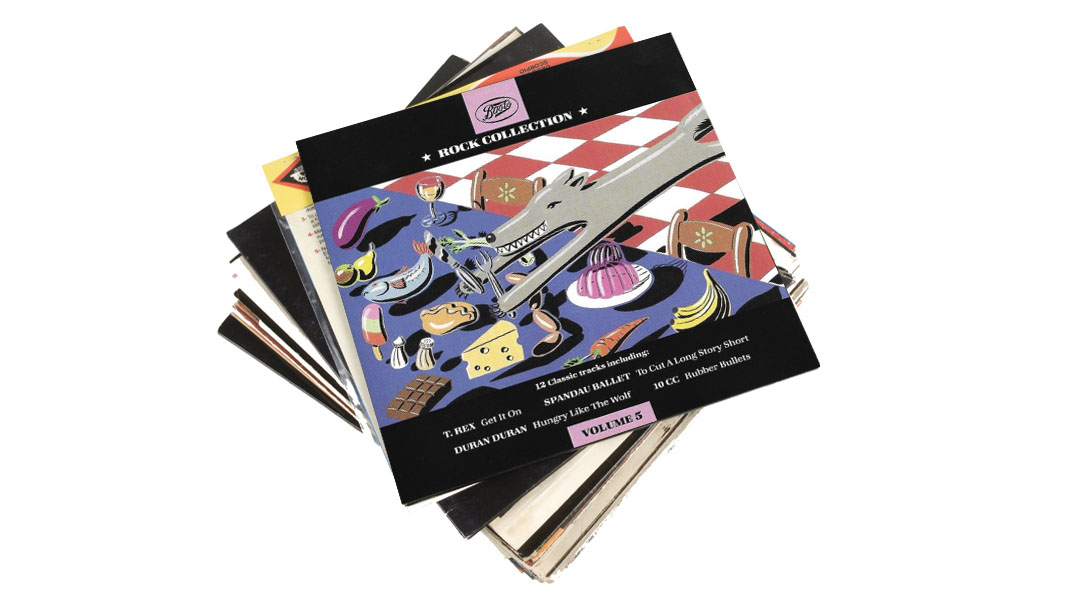
1. Various Artists - Boots Rock Collection Volume 5 (1990)
“My first very important record was the Boots Rock Collection Volume 5, which is absolutely hilarious, but was also a really fucking cool introduction to music that I’d never heard before.
“Basically, my mum and dad bought me a CD player for my 14th birthday. They didn’t really listen to music at all, but my dad had a couple of tapes that he’d listen to, like Tom Lehrer. My dad was a physicist and Tom Lehrer was like this really weird Harvard class professor, who was really cool because he was also a satirist and pianist.
“My dad would also listen to a bit of Bach, and he then had the Chariots of Fire soundtrack… the B-side to that’s really good, actually, and I used to listen to that all the time!
For a kid growing up in St Andrews in the middle of f**king nowhere who’d not heard anything, it was a really, really significant collection of songs to hear
“So my dad bought me this Boots Rock Collection in an attempt to buy me something that I would like, even though he didn’t know any of the music on it. It was just the sweetest thing… and it was wicked, man!
“It had Canned Heat, 10cc, Kim Wilde, T. Rex, The Stranglers…. for a kid growing up in St Andrews in the middle of fucking nowhere who’d not heard anything, it was a really, really significant collection of songs to hear. And there’s that amazing David Dundas song on there called Jeans On, which is so good!
“When I think back, all those songs definitely went in, and they’re all still there. I haven’t got it any more, but I’d actually love to get a copy of it.”

2. Cocteau Twins - Heaven Or Las Vegas (1990)
“The second major record I got was Heaven Or Las Vegas by Cocteau Twins. I’d won an English creative writing competition at school. They always gave you bookshop vouchers and you’d go and buy a book and then they’d present it to you at the prize-giving. I don’t think they realised that the bookshop had started selling albums, but everyone was just going and getting their favourite album instead of a book. It was so cool that I went up to get my English creative writing prize and I was given the Cocteau Twins wrapped in some nice wrapping paper!
“I think I was 15, actually, because I’d done this acting course over in Glasgow for the summer. It was the first time I’d spent six weeks away from home and it was the first time I met people who were really obsessed with music, and my really cool goth friend in Glasgow just told me to buy this album. And it just blew me away!
“It was just one of the most beautiful things I’d ever heard. I couldn’t believe there was this angelic singer singing in this weird made-up language. It was the first time I kind of heard melody where I didn’t understand what she was saying, but it was just as powerful as if I did… and then there were the shimmering guitars and the amazing production, and it was experimental. From what I’d been subjected to thus far, it was definitely a very new world for me.”
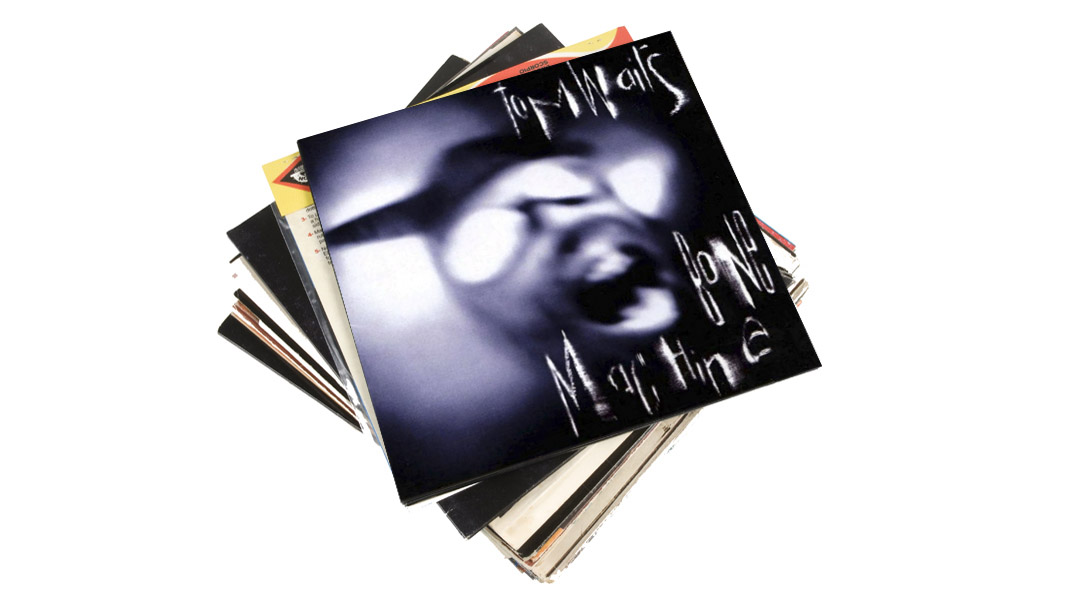
3. Tom Waits - Bone Machine (1992)
“I was in my first year of university by this point, and my housemate was a huge Tom Waits fan and we went to the big CD fair that was held in the Students Union, where there were all these bucket bins, and she was like, ‘Just get something by Tom Waits. It doesn’t matter what it is - get it!’
“So I went over to the W section and I bought a Muddy Waters CD, but then I picked up Bone Machine. It was just so weird with this screaming face and this blue cover. I was completely delighted and terrified when I played this record. It was just so dark and twisted-up, but at the same time incredibly human and real.
“And, you know, the guy’s got this song called Murder In The Red Barn, and it sounds like he used the whole fucking barn for the sound of the song. It was so theatrical, and he had this crazy way of singing.
It was just so dark and twisted-up, but at the same time incredibly human and real
“It was quite weird because I thought he was a black artist for a long time, because I never saw a picture of him. He looks like a black guy on the front of the cover, so it was kind of a bit of a revelation when I found out he was white.
“This was really my introduction to the blues. It was like, ‘Okay. Yes, I’m white but I’m listening to Tom Waits and I’m listening to The Rolling Stones and they’re doing it!’ So I think I actually really started my love affair with the blues with Tom Waits.”
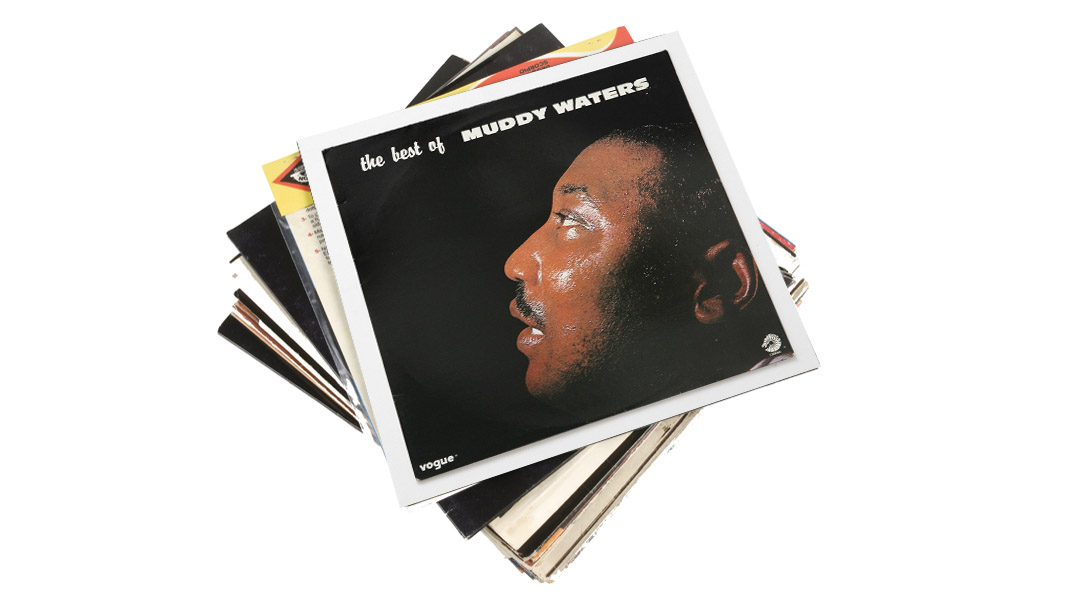
4. Muddy Waters - Best Of
“I picked up a Muddy Waters album at the same CD fair. It was just a Best Of record, but it was a really important album. I wore out both that and Bone Machine at the same time.
“I think I was just starting to really latch on to the blues voice and also recognising that there was an element of that in the way that I wanted to sing. I was naturally gravitating towards that.
“And I liked his guitar playing. I was just graduating from a kind of more picking, nylon-string style to going full-blown steel-string rhythm guitar, so it was really cool hearing some electric, you know, and just getting a bit more into electric guitar.
“But it was really about rhythm and that was the case with the Bone Machine record as well. It was really about keeping those grooves and hearing the beat. There’s something quite primal about the rhythm of that music.”
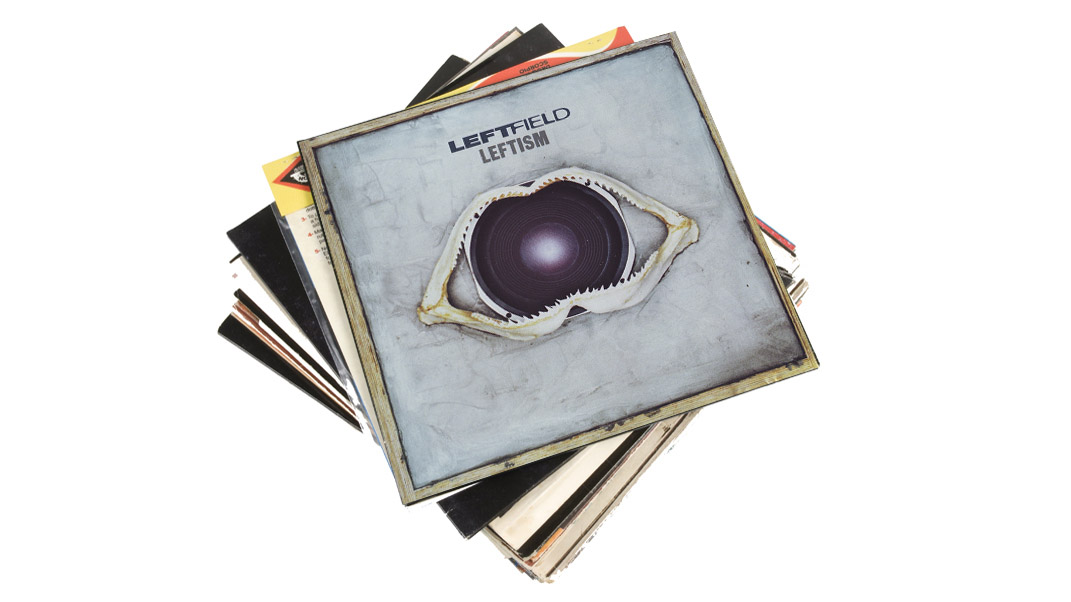
5. Leftfield - Leftism (1995)
“Talking of primal and rhythmic, I’m going to go on to Leftism by Leftfield. I had a very illustrious clubbing career when I was younger, which might surprise some people, but I love dance music.
“I’m a huge fan of The Chemical Brothers and the Ninja Tune label and a lot of the stuff that they put out like DJ Shadow but I think, out of all of them, Leftism really just excited my musical brain in terms of the way that they mixed real instruments with dance tracks.”
“Afro-Left has got this amazing single-string weird instrument in it, and I always go back to that song because, when it kicks in, it’s so powerful. I just felt it was a really deeply musical record as well as being an amazing dance record.
“It’s just one of those albums that still sounds really good today, which is really hard with dance music, I think, because you were using the technology of the time. This still really holds up.”

6. Joni Mitchell - Blue (1971)
“This was another university favourite. I would just listen to it on repeat for hours and hours in my room.
“I think it’s one of those records that you put on when you’re in a certain mood and it’s like a companion, almost. It’s with you whenever you need it.
“Every time I listened to it, I would catch a different lyric or see a different theme in one of her songs. Also, I think it was through Blue that I heard the word ‘wanderlust’ for the first time, and I really, really felt that from her songs. She was this travelling troubadour with a somewhat hedonistic life, peppered with kind of heartache and loneliness.
“That nomadic artistic lifestyle just so appealed to me, but it was so far removed from the family I’d grown up in and anyone I knew. I had made friends with the Fence Collective guys back in Fife and they certainly did kind of live that reality - travelling and playing in Europe and living in little cottages outside of town and playing gigs and all of that. So Blue really was kind of a soundtrack to the life that I wanted.”

7. Beck - Odelay (1996)
“This album was a real game-changer for me because I’ve never been madly into hip-hop. I certainly liked some of the older stuff like De La Soul and A Tribe Called Quest and stuff like that and I really like Mos Def, but that was the first time I really got deeply into that kind of music.
“Also, on top of that, he’s just got these incredibly hooky pop songs, but then he’ll just go off on these mad tangents in the middle of a song, and there are just no rules with him.
“It was such a joyful, bonkers party record. I remember listening to it and thinking, ‘My God - I cannot imagine how fun it must be to play that album onstage and be that artist!’
“The lack of boundaries in his approach to making music and the writing of his songs and the song structures were very inspiring and really appealed to me.”
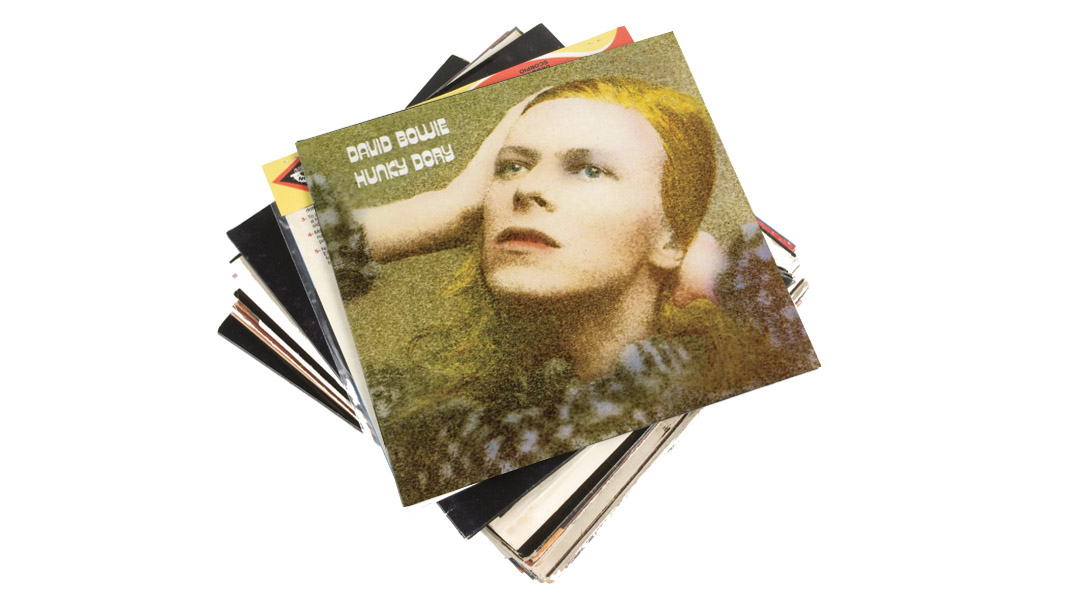
8. David Bowie - Hunky Dory (1971)
“I didn’t hear this until I was in my 20s. I remember just basically having my face in the stereo and playing it fully three times back-to-back, and I just couldn’t believe what I was hearing.
“Every single song completely floored me - where he could take you in such a short amount of time and how passionate his delivery was and how unique and original his ideas were and how great the playing was on all of the songs. It was just a completely new world hearing that.
“It’s the kind of record you listen to and you go, ‘Shit - I have to really work hard at being better!’ I actually can’t remember how I came to listen to it at that point, but I think I probably had just heard people talking about it.
“Obviously, I knew Bowie’s hits, but I’m not really too much of an archaeologist when it comes to music. I don’t really go and listen to an album and then go and listen to every record that that artist has made or listen to every influence that helped make it what it is. I hadn’t really delved deeply into Bowie yet… but it was an incredible experience.”

9. Bob Dylan - Blood On The Tracks (1975)
“I love that record so much because it’s Bob Dylan being really vulnerable. He’s really wearing his heart on his sleeve rather than his heart being hidden or where he’s just writing things in a book.
“The stories he’s telling feel very heartfelt and personal, but it’s a masterclass in poetry... just incredibly solid, timeless songwriting. I think it’s a bit like Lord Of The Rings or something, you know? You’re just listening to Dylan’s stories and he’s creating worlds that are probably partly true but partly not. He’s really bringing you into places that you’ve never been before and you can disappear into them.
“It’s just so visual, and the lyrics just stick with you forever. There’s such amazing standout things on there. Tangled Up In Blue is my favourite song on the record.”

10. Carole King - Tapestry (1971)
“I always go back to Tapestry, and I often don’t even need to listen to it. I just think about it.
“That album’s sort of a bit of a songwriting bible for me where it’s such a masterclass in how to write from the heart directly without any fluff and without any need to hide behind stories or poetry or any of that stuff.
“It’s just completely on a plate - ‘this is how Carole King feels’ - and then she puts it into the most glorious melodies and chord structures, and her tempos are amazing. Getting the right tempo for a song is maybe slightly overlooked.
“She is just a genius. She has such a natural ear for composing a perfect pop song.”